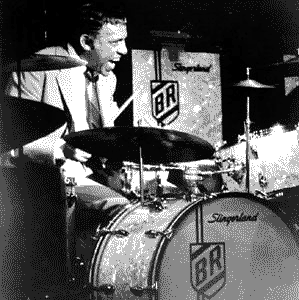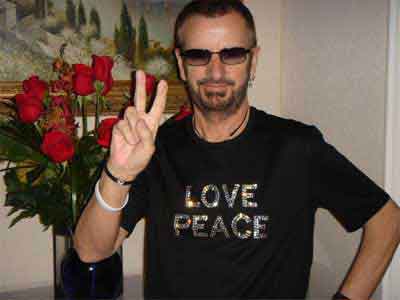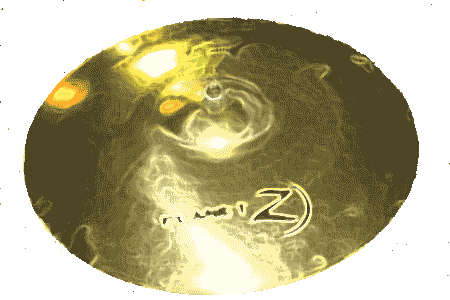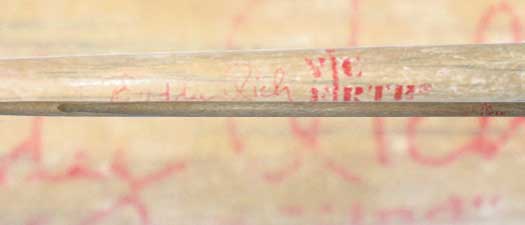Traps The Drum Wonder and The Pioneer Of Bebop

Buddy Rich
Buddy Rich
"Born Bernard Rich to vaudevillians Robert and Bess Rich on September 30, 1917, the famed drummer was introduced to audiences at a very young age." By 1921 he was a seasoned solo performer with his vaudeville act, "Traps The Drum Wonder" and performed regularly on Broadway at the age of four.
Buddy was one of those legendary drummers who never received any formal lessons and refused to practice outside of his performances. "Arguably the greatest jazz drummer of all time, his career spanned seven decades, beginning when Rich was 18 months old and continuing until his death in 1987."
Buddy Rich was immensely gifted and had a natural sense of rhythm. He could play with remarkable speed and dexterity. By 1939, Buddy joined the Tommy Dorsey band and later went on to play with jazz greats such as Louis Armstrong, Dizzy Gillespie and Gene Krupa. Buddy toured with his own bands throughout the 1960's and 70's and made several appearances on the Tonight Show with Johnny Carson, the Merv Griffin Show, the Dick Cavett Show and the Mike Douglas Show.
Max Roach

Max Roach
A quote from Max explaining his philosophy to The New York Times in 1990, "You can't write the same book twice. Though I've been in historic musical situations, I can't go back and do that again. And though I run into artistic crises, they keep my life interesting."
Max Roach was born on January 10, 1924 and as a "young man, Mr. Roach, a percussion virtuoso capable of playing at the most brutal tempos with subtlety as well as power, was among a small circle of adventurous musicians who brought about wholesale changes in jazz. He remained adventures to the end." While in his teens, he played with the alto saxophonist Charlie Parker at a Harlem after-hour club in 1942. He was recognized as a pioneer in a new form of jazz called bebop.
Roach was a master percussionist, he "challenged his listeners and himself by making music that connected the jazz of the pre-World War II era with the beats of the hip-hop generation." I really enjoy watching the videos of Max. He has very fast hands and the ability to maintain several rhythms simultaneously. "By layering different beats and varying the meter, Roach pushed jazz beyond the boundaries of standard 4/4 time. His dislocated beats help define bebop."
Max was not only an innovator with his music but also in other ways. He was among the first to use jazz to address racial and political issues, one of the first jazz musicians to teach full time at a university and in 1988 became the first "jazz musician to receive a so-called genius grant from the MacArthur Foundation."
Rock-n-Roll

Journey
Steve Smith
Steve is pictured at the right (the one with the red shirt) with (L-R) Jonathan Cain, Ross Valory, Neal Schon and Steve Perry. This photo was taken in 1982. Steve started studying the instrument at age nine and through his teens years played in the school band programs and garage bands. His professional career started at age 19, playing jazz before rock-n-roll. He started playing swing music with the Lin Biviano Big Band, from there he played with a free jazz group, and then started playing fusion music with other musicians. Fusion music had the flavor of jazz with a rock, funk and R and B concept.
He joined Journey in 1978 and went from playing jazz to playing rock-n-roll. In 1983 while still playing with Journey, Smith formed his own band called Vital Information. Sadly in 1985 he was fired from Journey but that did not stop him from playing. He went back to his love of jazz and fusion and focused his time and effort on his band, Vital Information. Smith still plays, performs and records his own music, music that might not be air-playable but is definitely as creative as it can possible be.

Ringo Starr
Ringo Starr
Ringo Starr was born Richard Starkey on July 7, 1940 in Liverpool, England. He is best known as the drummer for The Beatles. He was the oldest of the band members and the last to join the "Fab Four". The talented Englishman not only plays the drums but he also acts and composes. At the age of six, Richard received his first small drum. This was given to him by his parents while he was in the hospital for a bout of appendicitis (serious medical condition in which the appendix becomes inflamed and painful). Unfortunately, Richard was in and out of various hospitals due to childhood illnesses.
As he got older, Richard became interested in the Liverpool music known as skiffle. "Ringo started his own group called the Eddie Clayton Skiffle Group in 1957. In 1959, Ringo moved on to The Raving Texans, a quartet led by Rory Storm. Ringo became quite a good drummer with the added performance practice, even taking advantage of solos called "Starr Time". Ringo got his nickname here because of the numerous rings he wore on his pinky and ring fingers. The name Starr was chosen by dropping the "key" from his last name. This gave him the catchy title we know him today--Ringo Starr." The Hurricanes(changed the name from The Raving Texans to the Hurricanes) enjoyed great success in Liverpool and Germany.
Richard met his fellow Beatles in Hamburg, Germany in October of 1960. He replaced the Beatles original drummer Pete Best. Ringo's drumming style and the music of The Beatles had a symbiotic connection -- I don't have to tell you what happened next. Lennon said of Starr "Ringo was a star in his own right in Liverpool before we even met. He was a professional drummer who sang and performed and had Ringo Starr-time and he was in one of the top groups in Britain but especially in Liverpool before we even had a drummer ... Ringo's a damn good drummer."
Starr established a new "approach to rhythm in popular music that some claim continues to grow in its significance and influence with every decade since The Beatles recorded their music." "Starr is also considered to have advanced various modern drumming techniques (for playing and recording) such as the matched grip, placing the drums on high risers for visibility as part of the band, tuning the drums lower, and using muffling devices on tonal rings, along with his general contributions to The Beatles as a whole."
Drummer Steve Smith said: "Before Ringo, drum stars were measured by their soloing ability and virtuosity. Ringo's popularity brought forth a new paradigm in how the public saw drummers. We started to see the drummer as an equal participant in the compositional aspect. One of Ringo's great qualities was that he composed unique, stylistic drum parts for the Beatles songs. His parts are so signature to the songs that you can listen to a Ringo drum part without the rest of the music and still identify the song." These days Richard fills his life with film acting, concerts, tours, television appearances and even the possibility of becoming a knight.


